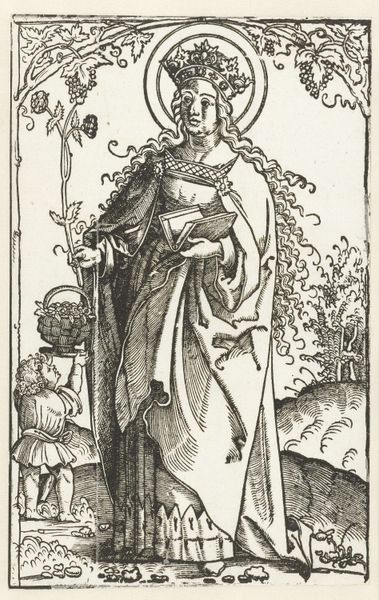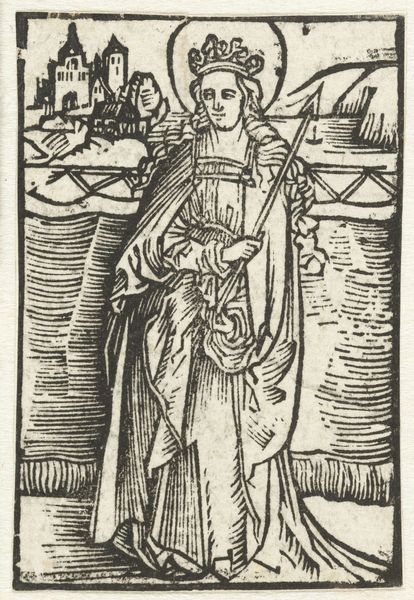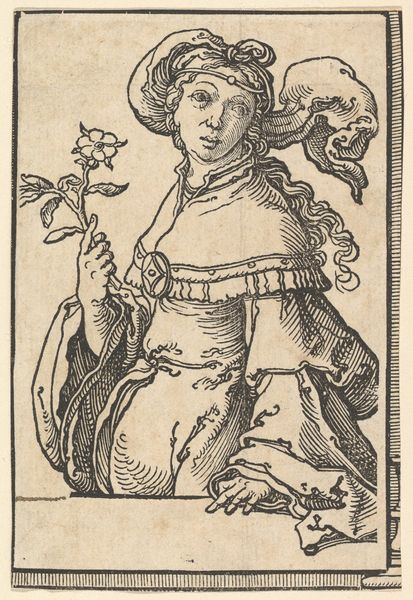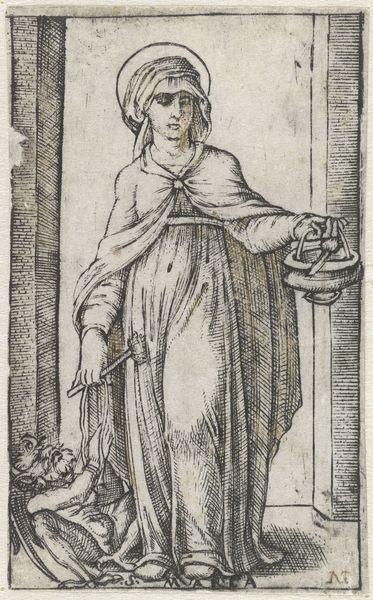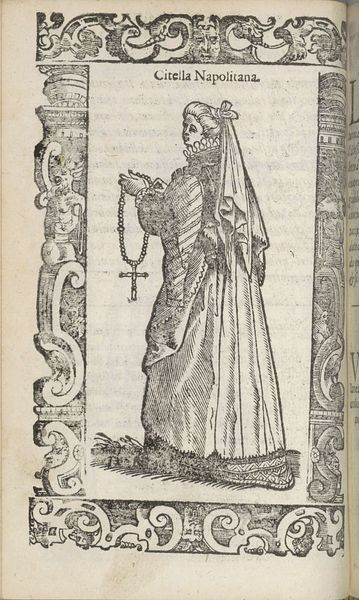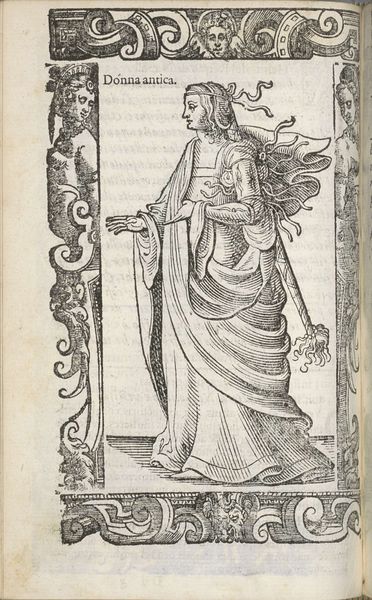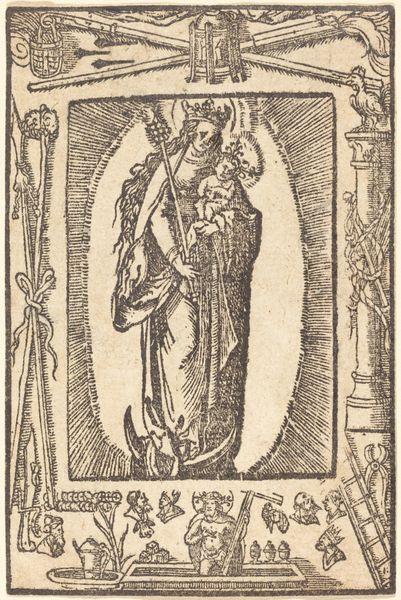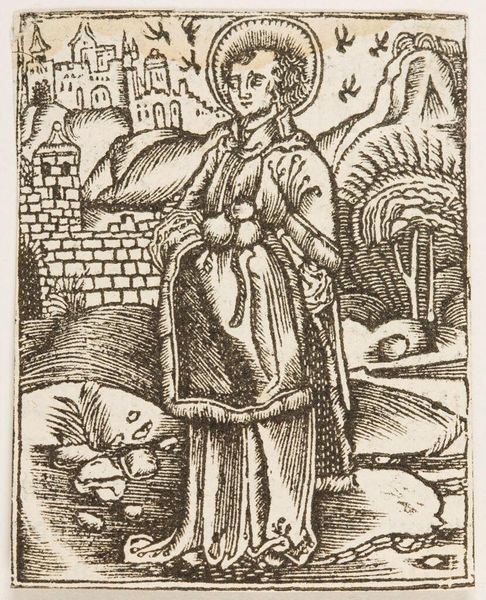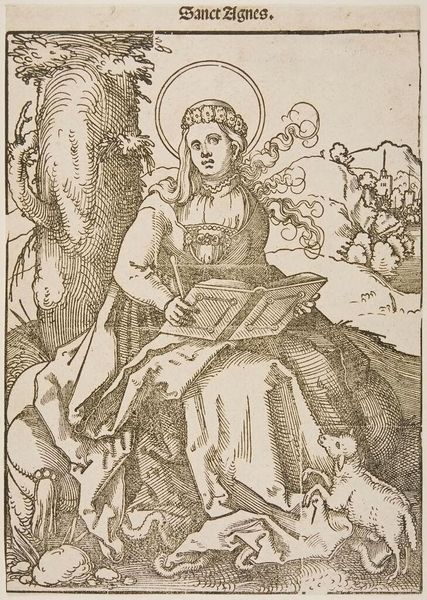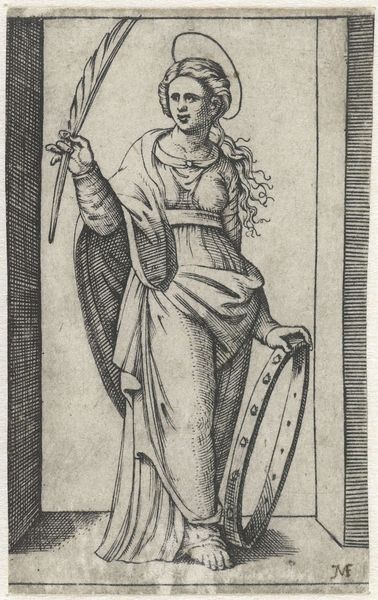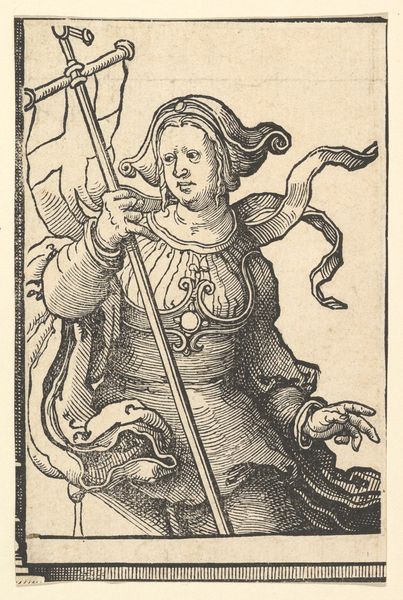
drawing, print, woodcut, engraving
#
drawing
#
pen drawing
# print
#
pen illustration
#
pen sketch
#
figuration
#
pen-ink sketch
#
woodcut
#
line
#
pen work
#
sketchbook drawing
#
history-painting
#
northern-renaissance
#
engraving
Dimensions: height 61 mm, width 44 mm
Copyright: Rijks Museum: Open Domain
Curator: Let’s take a closer look at "Heilige Margaretha" ("Saint Margaret"), a woodcut created around 1503 by Albrecht Dürer. What stands out to you initially? Editor: The contrast! It's stark and dramatic, and makes it look like an old icon despite it being a print, with incredibly fine lines creating texture in such a small-scale piece. There’s almost a radiant quality, especially around the central figure. Curator: Indeed. As a symbol, the light embodies purity, which becomes central to Margaret's tale of sainthood. It visually represents divine grace protecting her. This contrasts the grotesque dragon beneath her feet, an iconographic representation of evil or the Devil, reinforcing the saint's virtue. Editor: It feels so loaded, even beyond the dragon imagery. Look at her calm expression juxtaposed with the implied violence. I want to understand more about what it signified historically. How would it function, do you think, as a printed image distributed at this time? Curator: Prints such as this allowed Dürer's artistry and religious stories to circulate widely in society, not just to the wealthy elite. It depicts Saint Margaret, a popular figure in the late Middle Ages and early Renaissance, renowned for her unwavering faith during persecution and swallowed alive by Satan but her body expelled unharmed. Editor: Right! The drama! So the dragon at her feet… it's alluding to that legend? Curator: Exactly! Holding a book signifies the wisdom granted by her unwavering Christian belief and understanding. And do you notice the cross, emblem of Christianity, subduing the serpent at the bottom of the picture? The visual language of religious power could not be clearer. This wasn't simply decorative, but carried the heavy weight of a society governed by fear of damnation and hope of redemption. Editor: It’s striking how Dürer managed to imbue a seemingly simple scene with so much narrative. It reminds me how powerfully art like this cemented specific ideological positions within the culture. What’s most interesting is that these same iconographic ideas continue to ripple across time to this very day. Curator: Absolutely, it allows us to consider how imagery continues to perpetuate its effect over time. A testament to visual communication!
Comments
No comments
Be the first to comment and join the conversation on the ultimate creative platform.
